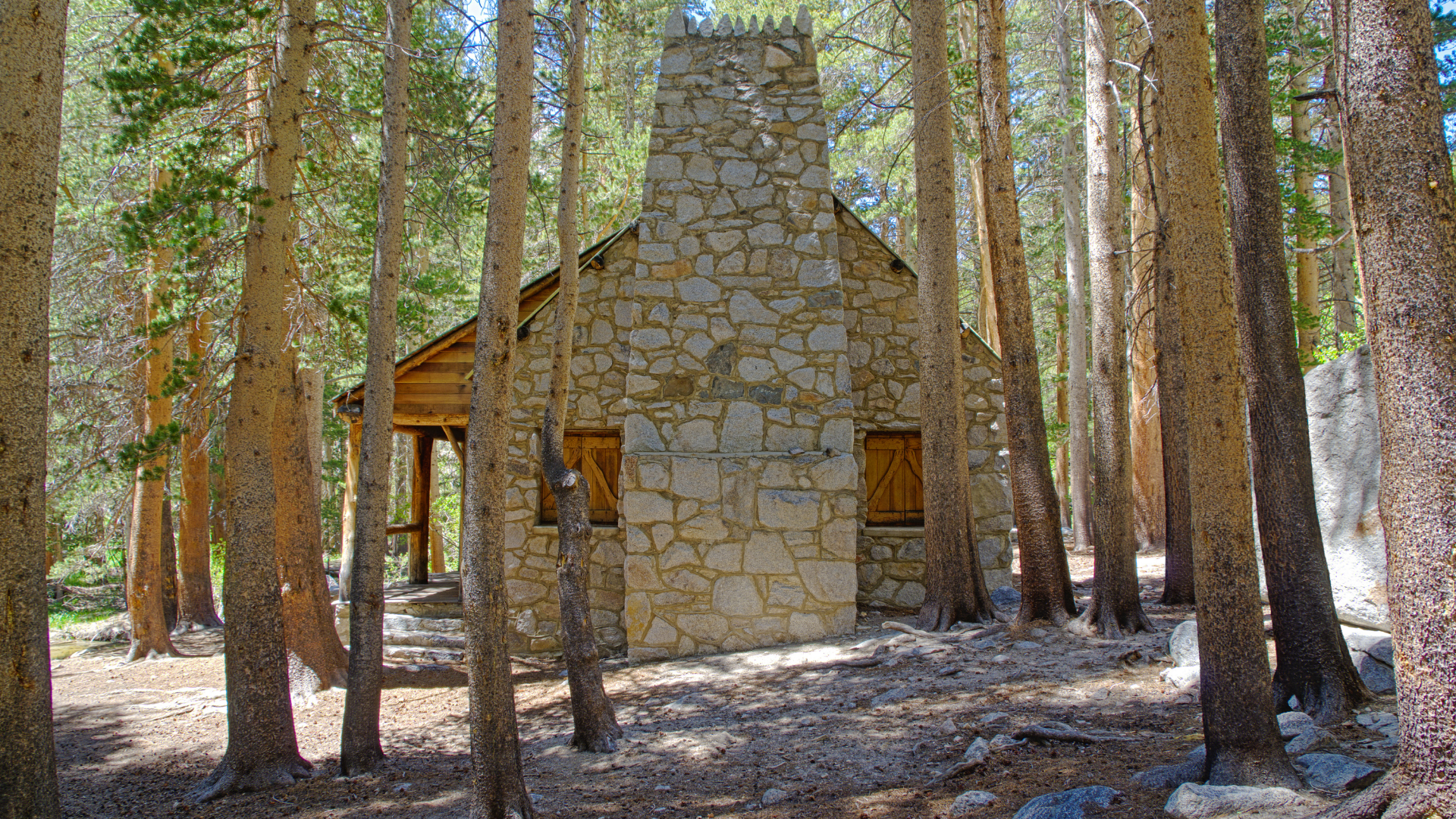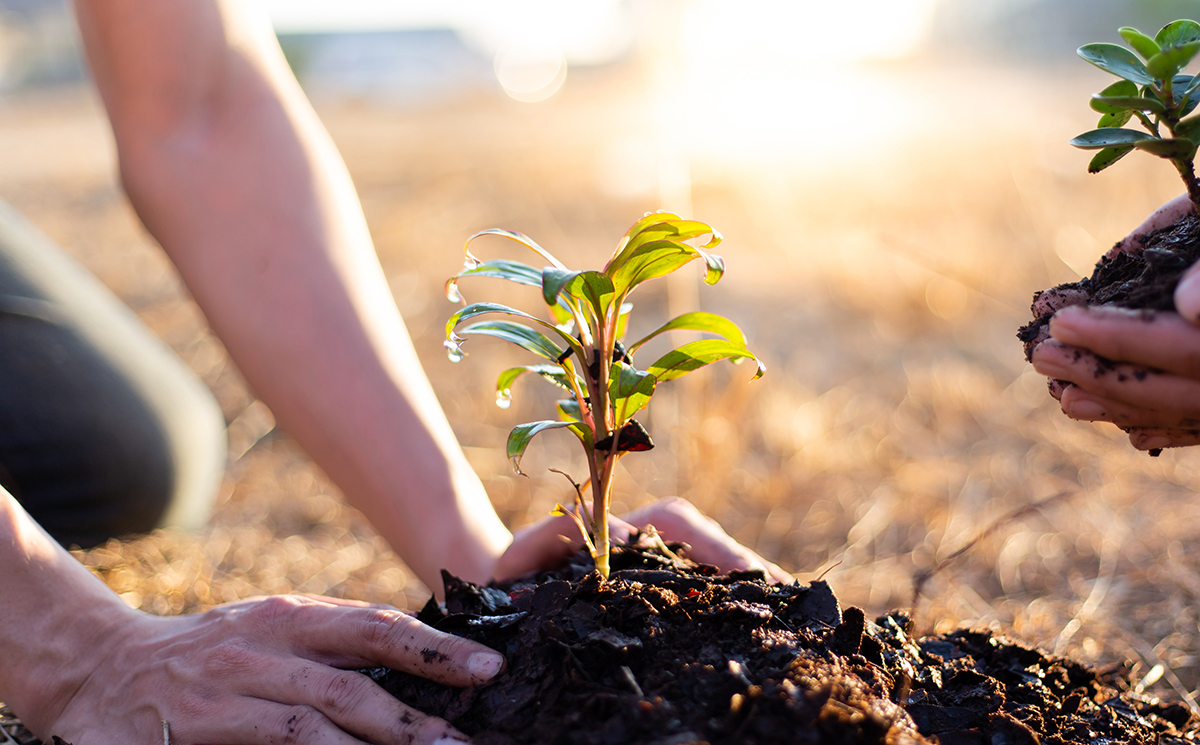Colorado’s population is growing. Its urban areas are rapidly expanding, and people are building more homes in what once the natural forest was and brushlands. Newcomers to rural areas need to know how to correctly landscape their property to reduce wildfire hazards.
Improper landscaping worries land managers and fire officials because it can greatly increase the risk of structure and property damage from wildfire. It is a question of when, not if, a wildfire will strike any area.
Vegetative clearance around the house (defensible space) is a primary determinant of a home’s ability to survive a wildfire. Defensible space is, simply, room for firefighters to do their job.

Why should you add defensible space landscaping to your property?
People often resist creating defensible space because they believe that it will be unattractive, unnatural, and sterile-looking. It doesn’t have to be!
Wise landowners carefully plan landscaping within the defensible space. This effort yields a many-fold return of beauty, enjoyment, and added property value. Development of defensible space is outlined in fact sheet 6.302, Creating Wildfire Defensible Zones. Colorado has great diversity in climate, geology, and vegetation. Home and cabin sites can be found from the foothills through 10,000foot elevations.
Due to the extreme environment, recommending plants can be challenging. While native plant materials generally are best, a wide range of species can be grown successfully in Colorado. Many plant species are suitable for landscaping in defensible spaces.
Pay attention to plant arrangement and maintenance to ensure success. It has often been said that how and where you plant is more important than what you plant. While this is indeed true, given a choice among plants, choose those that are more resistant to wildfire.
Consider the following factors when planning, designing, and planting the FireWise landscape within your home’s defensible space:
- Landscape according to the recommended defensible-space zones. That is, the plants near your home should be more widely spaced and lower growing than those farther away.
- Do not plant in large masses. Instead, plant in small, irregular clusters or islands.
- Use decorative rock, gravel, and stepping stone pathways to break up the continuity of the vegetation and fuels.
- Incorporate a diversity of plant types and species in your landscape. Not only will this be visually satisfying, but it should help keep pests and diseases from causing problems within the whole landscape.
- In the event of drought and water rationing, prioritize plants to be saved. Provide available supplemental water to plants closest to your house.
- Use mulches to conserve moisture and reduce weed growth. It is best to use a non-organic mulch such as pea gravel or stone. Do not use pine bark, thick layers of pine needles.
- Be creative! Further vary your landscape by including bulbs, garden art, and containers for added color.

Implementing different vegetation types in landscaping
Grasses
Grasses ignite easily and burn rapidly, during much of the year. Tallgrass will quickly carry fire to your house. Mow grasses low in the inner zones of the defensible space. Keep them short closest to the house and gradually increase height outward from the house to a maximum of 8 inches.
Mowing is particularly important during fall, winter, and before green-up in early spring, when grasses are dry, dormant, and in a “cured” fuel condition. Given Colorado’s extremely variable weather, wildfires can occur any time of the year. Maintenance of the grassy areas around your home is critical. Mow grasses low around the garage, outbuildings, decks, firewood piles, propane tanks, shrubs, and specimen trees with low-growing branches.
Ground Cover Plants
Ground cover plants are a good alternative to grass for parts of your defensible space. They replace bare, weedy, or unsightly patches near your home with ground covers, rock gardens, vegetable gardens, and mulches.
Ground cover plants break up the monotony of grass and enhance the beauty of your landscape. They provide a variety of textures and colors and help reduce soil erosion. Consider ground cover plants for areas where access for mowing or other maintenance is difficult, on steep slopes and hot, dry exposures.
Ground cover plants are usually low-growing. They are succulent or have other FireWise characteristics that make them useful, functional, and attractive. When planted in beds surrounded by walkways and paths, in raised beds, or as part of a rock garden, they become an effective barrier to fire spread. The ideal groundcover plant will spread, forming a dense mat of roots and foliage that reduces soil erosion, and excludes weeds. Mulch helps control erosion, conserve moisture and reduce weed growth. It can be organic (compost or leaf mold) but inorganic mulch is preferred (gravel, rock, decomposed granite).
Do not use mulches that have bark chips, straw, pine needles, or other flammable material that can carry fire. When using organic mulches, use just enough to reduce weed and grass growth. Avoid thick layers. When exposed to fire, thick layers tend to smolder and are difficult to extinguish.
Wildflowers
Wildflowers bring variety to a landscape and provide color from May until frost. Wildflower beds give a softer, more natural appearance to the otherwise manicured look often resulting from defensible space development.
A concern with wildflowers is the tall, dense areas of available fuel they can form, especially in dormancy. To reduce fire hazards, plant wildflowers in widely separated beds within the defensible space.
Do not plant them next to structures unless the beds are frequently watered and weeded and vegetation is promptly removed after the first hard frost. Use gravel walkways, rock retaining walls, or irrigated grass areas mowed to a low height to isolate wildflower beds from each other and other fuels.
Shrubs
Shrubs lend color and variety to the landscape and provide cover and food for wildlife. However, shrubs concern fire professionals because, as the next level in the “fuel continuum,” they can add significantly to total fuel loading.
The woody material in their stems and branches is a potential source of firebrands. When carried in the smoke column ahead of the main fire, firebrands can rapidly spread the fire in a phenomenon known as “spotting.”
The primary concern with shrubs is that they are a “ladder fuel” – they can carry a relatively easy-to-control surface grass fire into tree crowns. Crown fires are difficult, sometimes impossible, to control. To reduce the fire-spreading potential of shrubs, plant only widely separated, low-growing, nonresinous varieties close to structures.
Do not plant them directly beneath windows or vents or where they might spread under wooden decks. Do not plant shrubs under tree crowns or use them to screen propane tanks, firewood piles, or other flammable materials. Plant shrubs individually, as specimens, or in small clumps apart from each other and away from any trees within the defensible space.
Mow grasses low around shrubs. Prune dead stems from shrubs annually. Remove the lower branches and suckers from species such as Gambel oak to raise the canopy away from possible surface fires.
Structural elements of a FireWise landscape
Landscape
When building a deck or patio, use concrete, flagstone, or rock instead of wood. These materials do not burn and do not collect flammable debris like the space between planks in wooden decking. Where appropriate on steeper ground, use retaining walls to reduce the steepness of the slope.
Retaining walls also act as physical barriers to fire spread and help deflect heat from the fire upwards and away from structures. Rock or masonry walls are best, but even wooden tie walls constructed of heavy timbers will work. Put out any fires burning on the walls after the main fire front passes.
On steep slopes, consider building steps and walkways around structures. This makes access easier for home maintenance and enjoyment. It also serves as a physical barrier to fire spread and increases firefighters’ speed and safety as they work to defend your home.
Trees
Trees provide a large amount of available fuel for a fire and can be a significant source of firebrands if they do burn. Radiant heat from burning trees can ignite nearby shrubs, trees, and structures. Colorado’s elevation and temperature extremes limit tree selection. The best species to plant generally are those already growing on or near the site. Others may be planted with careful selection and common sense.
If your site receives enough moisture to grow them, plant deciduous trees such as aspen or narrow-leaf cottonwood. These species, even when planted in dense clumps, generally do not burn well, if at all. The greatest problem with these trees is the accumulation of dead leaves in the fall. Remove accumulations close to structures as soon as possible after leaf drops.
When site or available moisture limits recommended species to evergreens, carefully plan their placement. Do not plant trees near structures. Leave plenty of room between trees to allow for their growth. Spacing within the defensible space should be at least 10 feet between the edges of tree crowns.
On steep ground, allow even more space between crowns. Plant smaller trees initially on a 20- to 25-foot spacing to allow for tree growth. At some point, you will have to thin your trees to retain proper spacing. As the trees grow, prune branches to a height of 10 feet above the ground. Do not over prune the crowns. A good rule of thumb is to remove no more than one-third of the live crown of the tree when pruning. Prune existing trees as well as the ones you planted.
Some trees (for example, Colorado blue spruce) tend to keep a full crown. Other trees grown in the open may also exhibit a full growth habit. Limit the number of trees of this type within the defensible space. Prune others as described above and mow grasses around such specimen trees.
Maintenance
A landscape is a dynamic system that constantly grows and changes. Plants considered fire resistant and that have low fuel volumes can lose these characteristics over time. Your landscape, and the plants in it, must be maintained to retain their FireWise properties:
- Even the best defensible space can be compromised through lack of maintenance.
- Always keep a watchful eye on reducing the fuel volumes available to fire. Be aware of the growth habits of the plants within your landscape and of the changes that occur throughout the seasons.
- Remove annuals and perennials after they have gone to seed or when the stems become overly dry.
- Rake up leaves and other litter as it builds up through the season.
- Mow or trim grasses to a low height within your defensible space. This is particularly important as grasses cure.
- Remove plant parts damaged by snow, wind, frost, or other agents.
- Timely pruning is critical. Pruning not only reduces fuel volumes but also maintains healthier plants by producing more vigorous, succulent growth.
Author and Publication Date
By F.C. Dennis* 1/12
Staff Forester (retired), Colorado State Forest Service. 1/2012
References
- 6.302, Creating WildFire-Defensible Zones
- 6.304, Forest Home Fire Safety
- 6.305, FireWise Plant Materials
- 7.233, Wildflowers for Colorado
- 7.406, Flowers for Mountain Communities
- 7.413, Ground Covers for Mountain Communities
- 7.423, Trees and Shrubs for Mountain Areas
Disclaimer
Colorado State University, U.S. Department of Agriculture, and Colorado counties cooperating. CSU Extension programs are available to all without discrimination. No endorsement of products mentioned is intended nor is criticism implied of products not mentioned.
To find even more information on preparing your home for wildfire and creating defensible space, review the updated CSFS Guide.

